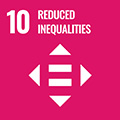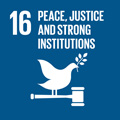- Docente: Alberto Melloni
- Credits: 12
- SSD: M-STO/07
- Language: Italian
- Moduli: Alberto Melloni (Modulo 1) Massimiliano Proietti (Modulo 2)
- Teaching Mode: Traditional lectures (Modulo 1) Traditional lectures (Modulo 2)
- Campus: Bologna
- Corso: Second cycle degree programme (LM) in Religions Histories Cultures (cod. 5890)
-
from Sep 17, 2024 to Dec 20, 2024
Learning outcomes
After completing the course, students understand historical-critical methods and socio-anthropological contributions to analyze texts of the various Christian traditions and possess the linguistic tools necessary to understand written sources in the languages in which they are expressed. They are able to research and critically examine materials, bibliographic and documentary sources of different types, in order to conduct historical-religious investigations. They can communicate the acquired knowledge in written and oral form, documenting accurately the information on which they base their conclusions and giving an account of the methodologies of investigation used and are able to give form to the results of their own research in the field of History of Christianity. They know how to collect, also thanks to the use of specific databases, a relevant bibliography to document and adequately deepen their own competences both in the field of research and in the working environment.
Course contents
"Institutions, Doctrines and Texts of Christianity in History."
The course is divided into two modules; module 2, held by Dr Massimiliano Proietti, includes a guest lecturer who will offer seminars on specific topics (Dr Lucia de Lorenzo).
The course is articulated into 4 parts:
(I) MAKING HISTORY CHRISTIANITY: CONCEPTIONS/EXPERIENCE.
- The discussion of discipline
- The discussion on mannerism
- The discussion on the object
(II) MAKING HISTORY OF AN INSTITUTION: THE ELECTION OF BISHOPS
- The election of bishops
- The election of the bishop of Rome
- History of the conclave
(III) MAKING HISTORY OF DOCTRINES: ECUMENISM
- Schism and Glaubenspaltung: a periodization
- Dynamics of the Christian desire for unity
- History of a missed opportunity
(IV) MAKING HISTORY OF THE HERMENEUTICS OF TEXTS:
- l symbolisms of faith
- The symbol of Nicaea and Nicaea-Cosantinople
- History of the migration of the text
Readings/Bibliography
Attending students 2 volumes among the 4 sections; nd non-attending students at least one work in each sections
BIBLIOGRAFIA
I) FARE STORIA CRISTIANESIMO: CONCEZIONI/ESPERIENZA
* A. Melloni, History and the History of religious objects, in Euare2023 Lectures, Brill 2024 (disponibile in italiano)
* H.-I. Marrou, H.-I. Marrou, Tristezza dello storico (1939), Brescia, Morcelliana,1999
* H. Jedin, Introduzione alla storia della Chiesa, con un introduzione di g. Alberigo, Morcelliana 62022
II) FARE STORIA DI UN ISTITUZIONE: L’ELEZIONE DEI VESCOVI
* A. Melloni, Storia del conclave e dell'elezione del papa , Secoli I-XXI, Marietti 2024
* A. Paravicini Bagliani-M.A. Visceglia, Il Conclave. Continuità e mutamenti dal medioevo ad oggi, Roma 2018
III) FARE STORIA DELLE DOTTRINE: L’ECUMENISMO
* Premesa a "L'unità dei cristiani. Storia di un desiderio", dir. da A . Melloni, il Mulino 2022 (vol. 1)
* L'accelerazione dell'impossibile. Introduzione a L'unità dei cristiani. Storia di un desiderio, dir. da A . Melloni, il Mulino 2022 (vol. 1), 2024 (vol. 2)
* A. Melloni, Tempus visitationis. Storia dell’intercomunione inaccaduta fra Roma e Costantinopoli, il Mulino 2019
IV) FARE STORIA DELL’ERMENEUTICA DEI TESTI:
* G.L. Dossetti, Il simbolo di Nicea e di Costantinopoli, Paideia 1970
* W. Kinzig, A history of early Christian Creed, De Gruyter 2024
* M. Smith, The Idea of Nicaea in the Early Church Councils, AD 431-451. Oxford UP 2018.
MANUALI: both attending and non attending at least one volume
* G.l. Potestà-G. Vian, Storia del cristianesimo, Il Mulino, 2014, 532 pp.
* G. Filoramo-L. Pellegrini-v. Lavenia- D. Menozzi, Storia della chiesa, 4 voll., EDB, Bologna 2019-2020, 1450 pp.
* R. Rusconi, Storia del cristianesimo e delle Chiese. Dalle origini ai giorni nostri, Morcelliana, 2019
Teaching methods
Lecture; historical-critical analysis of primary sources. Class attendance is not essential, but helps to better assimilate the content that will later be examined
Assessment methods
Please note that, a student who attends at least 75% of the lectures is considered to be attending (classes will be starting on 9/19). That being said, class attendance does not affect the exam except for differences in the syllabus (see Texts/Bibliography section).
The examination will be an oral test, based on reading/commenting on the sources and critical literature, and cannot be divided into two different parts. Both the ability to read primary sources and specific knowledge of topics in the history of Christianity will be assessed. Students will be asked to prove their mastery of specific vocabulary and knowledge of diachronic data (dates and historical events).
Below is an example of possible questions (should be understood as a MERE general allusion to a much broader spectrum of questions): "Read and comment on the following passage," "Who was Alfred Loisy?", "The importance of Leibniz for historical knowledge."
No books or notes are allowed during the test.
The examinations will take place following the order of registration in the Almaesami application lists.
Assessment.
Excellence (grades 30 and 30L): achievement of organic view of the topics proposed during the lectures and critical use demonstrating mastery of content and technical vocabulary.
Average assessment (grades 25 to 29): mnemonic knowledge and not entirely accurate use of technical vocabulary.
Sufficient assessment (grades 18 to 24): minimal knowledge of topics covered (dates and names), without serious errors.
Insufficient: lack of minimum requirements (i.e., sufficient rating).
Teaching tools
Slideshow and text projection
or students with BES or DSA, the use of compensatory and dispensatory measures can be agreed with the teacher, having certification recognized by the offices
Office hours
See the website of Alberto Melloni
See the website of Massimiliano Proietti
SDGs




This teaching activity contributes to the achievement of the Sustainable Development Goals of the UN 2030 Agenda.
